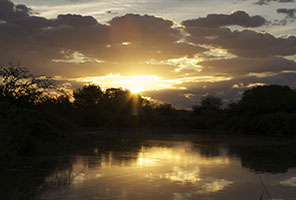September 18, 2014
via EPA
Did you ever stop to wonder how we get our information on the condition of our Nation's streams, lakes, estuaries, and coastal waters? Or whether these waters are safe enough to swim in, fish from, or use for drinking or irrigation purposes? Monitoring provides this basic information.
 The responsibility to monitor water quality rests with many different organizations. States and federal agencies have leading monitoring roles. Utilities, universities, watershed organizations and even individual citizens also monitor chemical, physical, and biological conditions in our waters.
The responsibility to monitor water quality rests with many different organizations. States and federal agencies have leading monitoring roles. Utilities, universities, watershed organizations and even individual citizens also monitor chemical, physical, and biological conditions in our waters.
World Water Monitoring Day is an international education and outreach program that builds public awareness of the importance of protecting water resources around the world by engaging people to conduct basic monitoring of their local water bodies.
World Water Monitoring Day is officially celebrated on September 18, but monitoring and educational events can take place any time between March 22 and December 31. During this time, people of all ages throughout the world community will have an opportunity to monitor the quality of their local watersheds and enter the results of their efforts into an international database. Simple monitoring kits are available for purchase by anyone interested in participating. These kits can be ordered at any time. For more information, visit World Water Monitoring Day.
In Arizona, the Arizona Department of Water Resources (ADWR) is tasked with providing stewardship of the State's precious and limited groundwater resources through active management and enforcement of the Arizona Groundwater Code. The Department's Hydrology Division engages in a wide variety of data collection activities in support of public needs, such as the Assured and Adequate Water Supply and Recharge Programs, Drought Monitoring Program, well drilling and well impact assessments, and in support of hydrologic studies such as groundwater modeling and water budget development.
There is a continuing need to provide better hydrologic data in many parts of the State and to devote more attention to ensuring that activities are coordinated so that the information gathered and products produced are made widely available within the Department and to the public. This will ensure that pertinent and recent data and results are used whenever possible, reduce redundancy, and increase communication.
There is also a need to collect additional data in areas of the state subject to rapid change, such as developing areas or areas sensitive to change. To these ends, the Department has formed an internal Hydrologic Monitoring Committee to review our data collection activities, adjust the activities to meet program needs (reaching Active Management Area (AMA) goals such as safe yield, development of groundwater water budgets, and models), and to ensure a proper flow of information within the Department and between the Department and outside agencies and the public.
The Department currently collects data concerning:
- Groundwater levels
- Groundwater use in AMAs and INAs
- Spring locations and surface water diversion points
- Crop types and uses
- Land subsidence
- Gravity changes and aquifer storage changes
- Aquifer water quality
Many of these activities are concentrated within the Active Management Areas of the state, as called for by the Groundwater Code. Recently, the Department has focused more attention in the rural areas of the state in recognition of rapid planned development in those areas and to support the Rural Water Shed Initiative, the statewide drought monitoring program, and the adjudication process underway in the Gila and Little Colorado River watersheds.
Check out the History of Water Management in Arizona.

